
Browse an alphabetical list of photographs. These historical images portray people, places, and events before, during, and after World War II and the Holocaust.
<< Previous | Displaying results 2101-2125 of 2641 for "Photo" | Next >>
In a scene from a Nazi propaganda film, Dr. Paul Eppstein (right), Council of Elders chairman, addresses Dutch Jews. Theresienstadt ghetto, Czechoslovakia, August 1944.
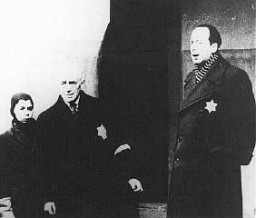
Scene from one of Oskar Schindler's parties in Krakow. At such events, Schindler (second from left) attempted to bribe Nazi officials for information about imminent deportations. Krakow, Poland, 1943.
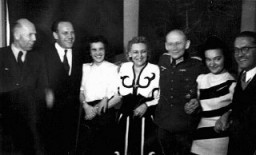
Rows of SA standard bearers line the field behind the speaker's podium at the 1935 Nazi Party Congress. Adolf Hitler addresses the crowds from the podium. Nuremberg, Germany, September 1935.
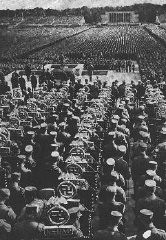
In July 1995, Bosnian Serb forces killed as many as 8,000 Bosniaks from Srebrenica. It was the largest massacre in Europe since the Holocaust. This photograph shows a Bosniak woman at a makeshift camp for people displaced from Srebrenica in July 1995.
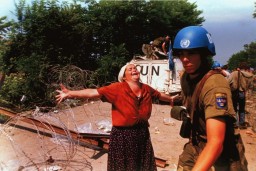
Soon after liberation, camp survivors eat near scattered corpses. Bergen-Belsen, Germany, after April 15, 1945.
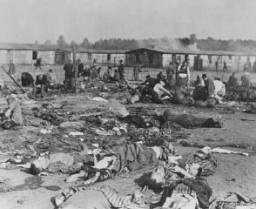
A woman walks along a road past a line of chimneys in the destroyed city of Murmansk. Photograph taken by Soviet photographer Yevgeny Khaldei. Murmansk, Soviet Union, 1942.
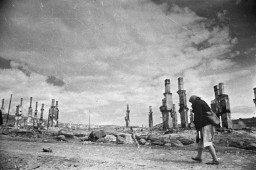
Scene of destruction during World War I: panoramic view of the battlefield at Guillemont, September 1916, during the Battle of the Somme. © IWM (Q 1281)

Houses along the River Meuse damaged during the Battle of Verdun, December 1916. The battle was one of the longest and deadliest of World War I. © IWM (Q 67594)
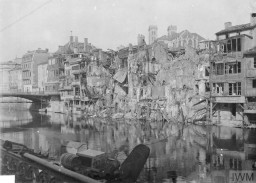
Soon after liberation, camp survivors walk amidst dead bodies. Bergen-Belsen, Germany, after April 15, 1945.
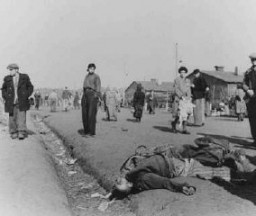
Oskar Schindler standing (second from right) with some of the people he rescued. Munich, Germany, May–June 1946.
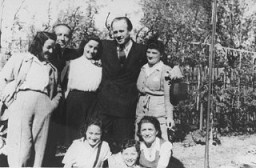
Construction of Oskar Schindler's armaments factory in Bruennlitz. Czechoslovakia, October 1944.
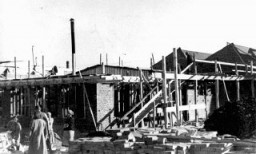
One of the many Jewish schools established by the Joint Distribution Committee in central and eastern Europe for children who had lost their parents during World War I. Rovno, Poland, after 1920.
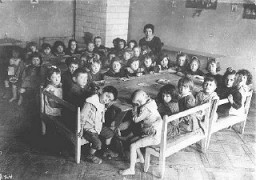
This report card was issued to Regina Laks, a fifth-grade student at the Herzel Hebrew Public School at the Düppel Center displaced persons camp.
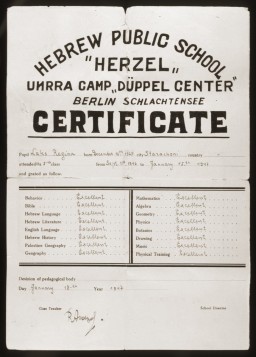
Group portrait of children holding their diplomas at a school in Bitola. Between 1925 and 1938.
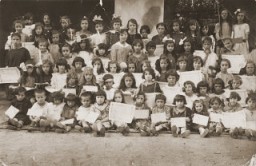
A wall sculpture memorializing Polish Jewish doctor Janusz Korczak resides on the exterior of a teaching hospital that bears his name, Olsztyn, Poland.
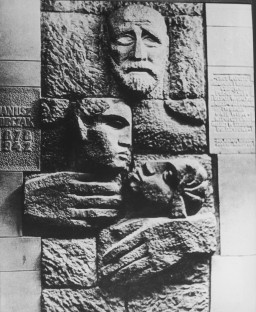
Four days after the outbreak of World War II, Secretary of State Cordell Hull signs the Neutrality Proclamation (first signed by President Franklin D. Roosevelt) at the State Department. Washington, DC, United States, September 5, 1939.
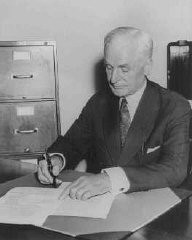
View of the photo mural of a selection at Auschwitz-Birkenau taken through the open railcar on the third floor of the Permanent Exhibition at the United States Holocaust Memorial Museum. Washington, DC, 1993–95.
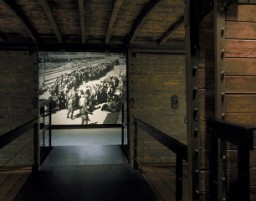
Hungarian Jews wait in front of the Swedish legation main office in hopes of obtaining Swedish protective passes. Budapest, Hungary, 1944. Photograph taken by Tom Veres, who was active in Raoul Wallenberg's efforts to rescue the Jews of Budapest.
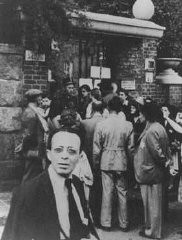
A Jewish passenger prays on board a refugee ship from Germany bound for Argentina in 1938.
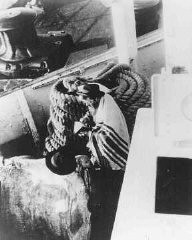
German Jews crowd the Palestine Emigration Office in an attempt to leave Germany. Berlin, Germany, 1935.
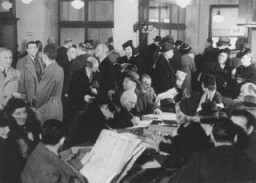
A segregated drinking fountain on the county courthouse lawn in Halifax, North Carolina. Photographed by John Vachon in April 1938.
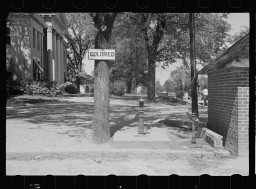
A segregated drinking fountain on the county courthouse lawn in Halifax, North Carolina. Photographed by John Vachon in April 1938.
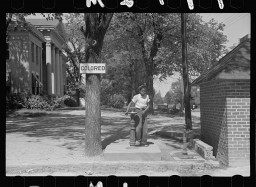
Selma Schwarzwald poses outside while wearing her first communion dress. Selma lived in hiding as a Polish Catholic during the war. Busko-Zdroj, Poland, 1945.
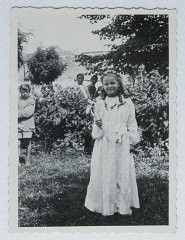
Selma Schwarzwald with her mother, Laura, in Lvov, Poland, September 1938.
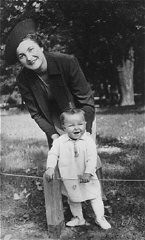
Herta Oberheuser was a physician at the Ravensbrück concentration camp. This photograph shows her being sentenced at the Doctors Trial in Nuremberg. Oberheuser was found guilty of performing medical experiments on camp inmates and was sentenced to 20 years in prison. Nuremberg, Germany, August 20, 1947.
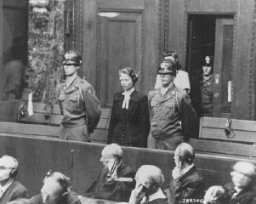
We would like to thank Crown Family Philanthropies, Abe and Ida Cooper Foundation, the Claims Conference, EVZ, and BMF for supporting the ongoing work to create content and resources for the Holocaust Encyclopedia. View the list of donor acknowledgement.